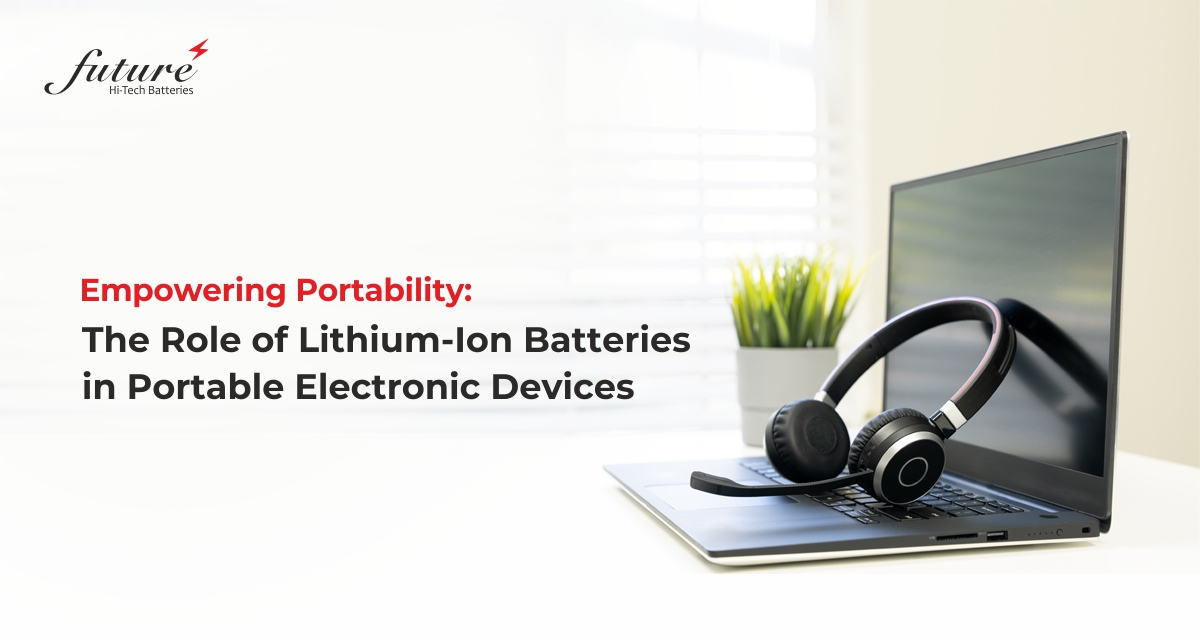Lithium-ion batteries are one of the most unheralded components of our modern world’s portable electronic devices. Today, these batteries are embedded in everything from smartphones and laptops to electric cars and wearable gadgets. It won’t be an exaggeration to say that they are changing the way we live, work, and play. One of its significance is the energy it contains, and the second is its use in the process of device design and usage. The peculiarities of these batteries’ usage require going through the history of battery technology in the context of portable electronics to enjoy the advantages that these batteries provide. This article unfolds how lithium-ion batteries were discovered as the silver bullets and influenced the technology-driven generation.
Impact on Device Design
Lithium-ion batteries have emerged as a top innovation for the world of device design as they brought new developments in miniaturization. Due to their energy density and low weight, they have been coined as portable electronic devices. It is not a debatable issue anymore that lithium-ion technology gives the efficiency required in using reliable, thin, and stylish gadgets.
Let us take the modern extraordinary popular item such as the smartphone as the cornerstone of an example. It can be said that lithium-ion batteries have been responsible for the reduction in the size of what was once a brick to today’s fancy pocket-sized mobile phones. These batteries supply the essential power whilst not bulking out the devices too much enabling larger lively screens and smoother form factors. Likewise, the same could be said for laptops whose girth has decreased, and yet their processing capabilities have not been compromised in any way, so their portability and usability have greatly improved.
The rise of wearables like smartwatches and fitness trackers is yet another testament to lithium-ion’s impact on design. These compact devices can run for days or even weeks on a single charge, all thanks to the power and efficiency of lithium-ion batteries.
That is why lithium-ion batteries define devices as they provided the aesthetic and evolutionary upgrade to the whole landscape of portable electronics. Their contribution to bringing into the world the modern slim-line devices so common today cannot be overemphasized.
Enhanced User Experience
Lithium-ion batteries are crucial in improving the utilization of portable electronic devices more closely related to the users. The research does not only show that they are simply energy storage units; they considerably confirm our relations with and uses of gadgets.
Long battery backup duration must be one of the most apparent improvements. Lithium batteries also make these devices last longer than other types and are perfect for a whole day’s use. As a cross-country flight, a long commute, or a day at the office – lithium-ion batteries deliver the strength behind the technology that lets users communicate and be entertained.
One of the nice features of rapid charging is another additional value that defines these batteries. The fast-charging feature is very important because it allows the user to charge his gadget and take it to normal use as soon as possible. Lesser perceived but nonetheless significant is the desirability for a reduction in device weight and size. The consumer today can be proud of the fact that gadgets are comparatively thinner and lighter for hand or pocket carry. Additionally, this leads to changes in the size of form factors, which enhances its portability and usability.
Higher Density
Lithium-ion batteries today can contribute to the boost in the power supply of portable electrical gadgets, primarily because of their higher energy density than the NiCd and NiMH batteries. Specific energy or energy density is one of those factors that define the efficacy and efficiency of batteries in portable devices.
The lithium-ion batteries have higher energy density than those of conventional batteries and can deliver more energy per unit of mass. This means that some devices that use lithium-ion batteries can be smaller and lighter and, more importantly, need replacement less often. Measured in energy per kilogram, lithium-ion batteries have a higher density compared to their counterparts, making lithium-ion batteries the industry’s go-to solution.
NiCd and NiMH batteries, widely used in portable devices earlier, have drawbacks such as memory effect, low capacity, and self-discharge significantly. Lithium ions on the other hand, are known to provide higher voltage, have a lower self-discharge, and have a better cycle life than NI-MH. These characteristics make them perfect for use in devices, that require small sizes and high efficiency, such as smartphones, laptops, and electric cars. Lithium-ion batteries are the most popular type of batteries these days for their high energy density, compact size, and lightweight that have taken society towards a more mobile society.
Challenges in Battery Life Improvement
Challenges confronting manufacturers as they seek to extend lithium-ion battery life are numerous despite the multiple benefits that come with the technology. However, there is a major challenge with capacity restriction. Thus, as a practice grows more popular with more and more users willing to reap the benefits of a device with longer battery life there is always more emphasis put on the energy density of the battery. But this is at variance with the capacity of the materials used in the batteries in these devices, insofar as attempting to store more energy in them is potentially dangerous and lowers the other capacities of the battery.
The second issue relates to achieving the high energy storage capability of the batteries without increasing risks of fire. The desire to achieve better capacity and shorter charging time poses certain hazards of overheating the battery or even causing battery fires occasionally. Balancing performance and safety are possibly some of the biggest issues that manufacturers are always struggling to determine.
Conclusion
Conclusively, lithium-ion batteries have established themselves as the blessing of modern age Information technology. It has been a means of giving life to portable electronic gadgets, which for long were a mere dream. It has adapted the art of making devices more portable and compact in shape. Further, it has contributed to improving usability by increasing battery backup and fast charging opportunities for users. Thank to these wonderful powerhouses they have been in a position to solve issues such as capacity constraints and the tendency to degrade with time. They also achieve a perfect compromise between show-off and security measures.
Reading their reviews, one can conclude that lithium-ion batteries are the beasts that contributed to the creation of the sources so portable and convenient now. To remain prominent in this technological advancement, it is considered important to keep abreast with current technologies in battery systems. The future looks even brighter in terms of innovation with coming generations of solid-state batteries and green materials. These improvements will go on and on, and the helpful and efficient portable electronic devices will stay with us, our companions in the fast-paced world we live.
Follow us on LinkedIn.
Lorem ipsum dolor sit amet, nec in adipiscing purus luctus, urna pellentesque fringilla vel, non sed arcu integer, mauris ullamcorper ante ut non torquent.










Your Comment Please